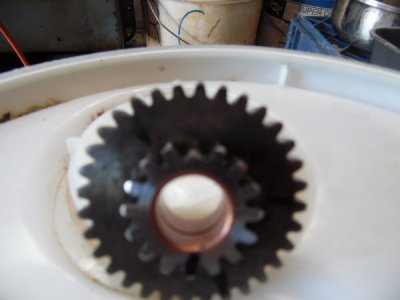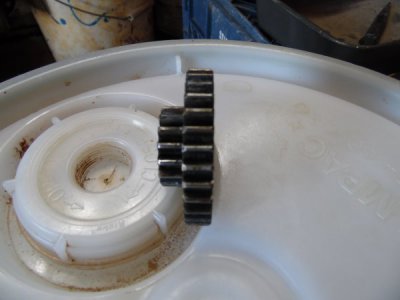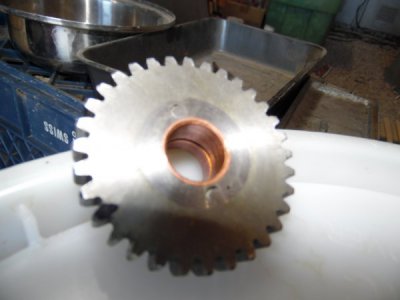- Joined
- Jul 12, 2016
- Messages
- 59
I have a Husky PC 36 lathe with a missing gear tooth in the quick change gear box. The lathe is a Taiwan product. It is a compound gear. I have got it out and the measurements are:
16 tooth and 32 tooth, 31.25 mm OD on the 16 tooth and 59.50 on the l32 tooth gear. I expect these measurement may be a little undersized due to gear wear. Bore size is 16 mm. Width is 18.95 mm.
It has a copper bushing in the bore. It appears that the small and large gears are pressed together as you can see evidence of two pins in the pics. The missing tooth is on the small gear.
I have searched the net and find no source for parts for my brand of lathe. I expect the gear is kind of a standard gear used in many of the Taiwan lathes.
Hoping someone here may steer me to a source for the gear, or they may have one this size laying around in their shop.


16 tooth and 32 tooth, 31.25 mm OD on the 16 tooth and 59.50 on the l32 tooth gear. I expect these measurement may be a little undersized due to gear wear. Bore size is 16 mm. Width is 18.95 mm.
It has a copper bushing in the bore. It appears that the small and large gears are pressed together as you can see evidence of two pins in the pics. The missing tooth is on the small gear.
I have searched the net and find no source for parts for my brand of lathe. I expect the gear is kind of a standard gear used in many of the Taiwan lathes.
Hoping someone here may steer me to a source for the gear, or they may have one this size laying around in their shop.




